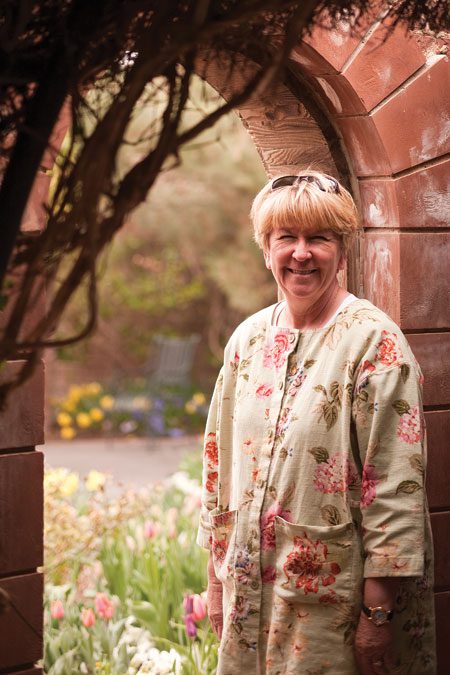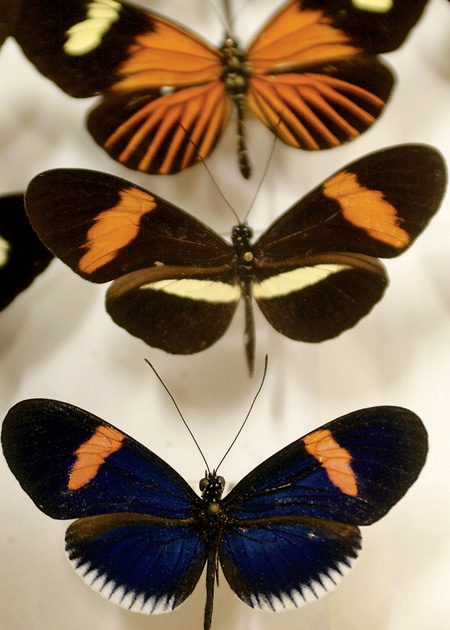The complete interview with BYU's head arbologist.
Q: What’s your background?
A: I have a degree in horticulture from BYU. I got my start doing the same thing many of my students are doing—working on the landscaping crew. They fall in love with trees like I did. After I graduated, I left for a few years, but I moved back to BYU in 1991 to take my old boss’s job as arborist.
Q: What else are you involved in?
A: I have my own business on the side. I’m on the board of the state chapter of the International Society of Arborists. I represent the state chapter to the national board, and I’m also the chairman of the chapter’s tree-climbing competition. I also teach arborist apprenticeship classes and give lectures around the state.
Q: So what keeps you at BYU?
A: The job. The satisfaction of being able to teach and train.
Q: How do I go about planting a tree in my yard?
A: The best way to start is to have a soil analysis done. Here in Utah, you can do that for $12–15 by sending a soil sample to the state extension agency or a soil lab. They’ll send you an analysis telling what your soil’s actually made out of (soil, silt, or clay) and how it will hold together. That will tell you what you have to work with and if you need to add nutrients or organic material to improve the quality of the soil. That’s the first thing you need to do.
The second thing is you have to look at is the kind of tree you want, whether you just want a large shade tree or a smaller flowering tree. Look at the placement around the house, whether it’s close to the road, so you’ll want a columnar tree that won’t get really large and break up the concrete. All those things will help you narrow down what qualities you want in a tree.
Q: How do I find the tree that’s right for my yard?
A: Go to a Web site (see suggestions below). Or go a local nursery that belongs to some kind of landscaping association. They back up what they sell. They’ll have a listing of what trees are best for your area. You have to look at the heartiness zones—certain trees in California won’t do well here, and vice versa.
The International Society of Arboriculture site, isa-arbor.com.
The Tree Care Industry Association site
The Arbor Day Foundation site
Any of the local extension agencies have good resources.
A lot of local businesses also have Web sites.
Q: What about planting?
A: There are big, big issues here. Just because you have a nursery or landscaper plant a tree doesn’t mean you’ll get it planted right, mostly because of lack of training. Probably 90% of trees I see have been misplanted.
Q: What are the most common mistakes?
A: They’re planted too deeply and overwatered. Plants pretty much drown and have a lack of oxygen. Plant it just deep enough so the root ball is covered with soil.
Q: How much should I water?
A: That’s one thing your soil sample will tell you. For example, if you have a lot of clay, your soil will take a long time drying out, because it doesn’t drain quickly—it just sits there. If it’s in a sandy, rocky soil, it will drain quickly, which is ideal. Most orchards are purposely planted in very rocky soil. But that doesn’t mean you can’t plant in heavy clay soils.
You can judge watering needs when you initially dig a hole to plant the tree. Fill the hole up all the way with water, let it drain, and fill it up one more time. Then watch to see how long it takes to drain out. If it doesn’t drain overnight, you’ve got a heavy clay soil, and the amount of watering could go from once a week to every ten days. If it drains out immediately, then you have to water every other day. That gives you a general idea.
Q: What about watering in the long-term?
A: After the tree is established, it will do much better with less watering. Trees are actually healthier and stronger if they live in stress conditions. Kind of a gospel principle. They have to send roots out to tap into the available water, bringing a stronger root system.
Most trees don’t require additional fertilizer, unless there are some nutrient deficiencies, which may be attributed to overwatering. Iron deficiency is most common. It washes out of the soil.
If you start to see wilting, that doesn’t necessarily mean your tree needs water, because you’ll see the same symptoms for overwatering. If the soil is still moist, don’t add water. People see that wilting and think, “Oh no, my tree’s drying up!” so they add more water and exacerbate the problem. Get someone out who can identify it—an arborist or someone from the extension agency. You’ve put the time and the money into planting a nice landscape, and you might have to pay a bit to have them look after a problem.
Q: How often should I prune?
A: If the tree is taken care of properly, you only need to have structural pruning every three to five years by a certified arborist. Check for credentials and references. If those things are followed, most trees can live hundreds of years. They’ll be healthy and structurally safe and aesthetically pleasing, they’ll do wonderful things for the landscape.
Q: What’s your favorite tree on campus?
A: People ask me that all the time. It’s hard to narrow down…It’s probably the zelkova just outside the Wilkinson Center. If you come out of the building next to the Varsity Theatre, it’s on your right—a nice, full, deciduous tree.









